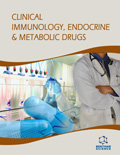Abstract
Influenza virus A (IAV) once established into the host can trigger a broad spectrum of immune responses. In this respect, innate immunity contributes to host pro- tection against IAV either via activation of epithelial cells and phagocytes or release of mediators such as antiviral peptides and cytokines. On the other hand, antigen presenta- tion by dendritic cells, T helper cell involvement and T cytotoxic-mediated adaptive functions complete the initial defense mounted by innate immunity. Despite the host robust immune response against IAV, this virus is also able to promote escape mechanisms. In fact, evidence has been provided that both type I and type II interferons candampen phagocytic responses against IAV. Besides that, T regulatory (Treg) cells, when hyper-activated, can also depress the primary immune response against IAV. On these bases, natural products can be beneficial in the treatment of IAV infection for their capacity to regulate im- munity as well as the intestinal microbiota composition. Prebiotics and probiotics are used in the case of IAV infections in ageing which is very often complicated by co-infections. Polyphenols act as anti-inflammatory substances, thus activating Treg cell function via production of interleukin-10. According to the dynamics of immune response against IAV, activation of Treg cells can be advantageous for the host in the later phase of infection in order to reduce lung immunopathology.
Keywords: Adaptive immune response, alveolar macrophages, influenza A virus, innate immune response, polyphenols, poly- unsaturated fatty acids, prebiotics, probiotics.
Graphical Abstract
 28
28

